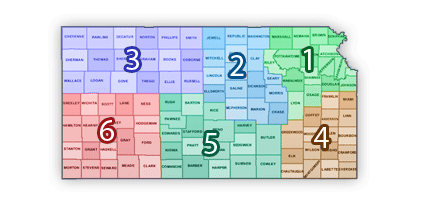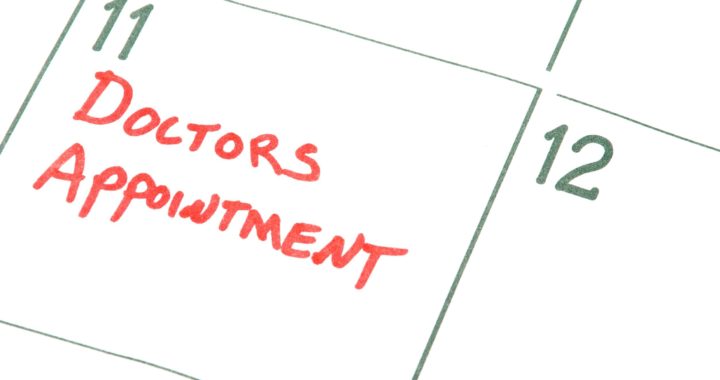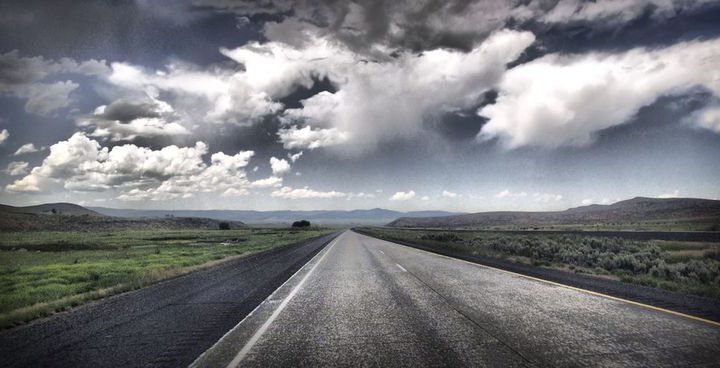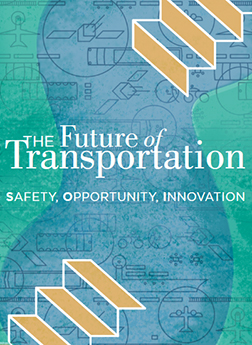The Kansas Department of Transportation is completing plans across the state for coordinating transit service for seniors, persons with disabilities, and low-income persons. The goal of the plans is to identify opportunities for individual transportation agencies/providers to team with each other or with public transit providers in their service area to expand travel options for people. Gathering input from interested public, human services agencies, community leaders, and businesses is very important to the planning effort. Thus, a series of open house meetings have been scheduled across the state.
north central region
KDOT Information, News and Projects Specific to Your Area
District 2: North Central Kansas
Keep up on what’s happening with KDOT projects within the region on their website: http://www.ksdot.org/divoperat/district2.asp
Other regions are available as well.
All Aboard! Next Stop, Less Obesity.
The idea that mass transit helps fight obesity makes intuitive sense. Taking the bus or train usually means walking to your final destination, thus providing an automatic period of pound-shedding daily exercise.
Read more here: https://psmag.com/news/subway-really-is-the-key-to-healthy-living
Why doctors should consider giving their patients a ride
By Suzanne Alewine | 04/24/2017 05:00 AM EDT
In 2014, Leo Haralson’s big toe turned black, a casualty of his battle with diabetes. A veteran and a former software developer for the U.S. Navy, he had insurance through both Medicare and the Veterans Affairs Department, so getting good health care shouldn’t have been a problem. But after the toe was amputated, he developed an infection that spread to his bones. Haralson needed daily oxygen treatments at a hospital to halt the infection.
Haralson and his wife, 65, motorcycle enthusiasts originally from Wisconsin, had retired to southern Missouri, seeking a warmer climate and a home in the middle of the country so they could drive off in any direction. They built their dream home on the outskirts of the town of Mountain View, named for its commanding view of the Ozarks. But his wife could no longer drive, and with his foot in bandages, Leo couldn’t either. The hospital was 30 miles down Highway 60 from his home, and the local transit provider has bus service only on Wednesdays. Without a way to get to the hospital every day for a month, Haralson faced losing his leg—and his ability to live independently.
Transportation comes up in virtually every conversation about rural health care, particularly in the past few years as hospital closures have increased the distances many patients need to travel. Missouri has closed three hospitals since 2010, victims of cutbacks in reimbursement from insurers and the government. Distances patients must travel are increasing.
As policymakers look at ways to improve the health of rural Americans, it’s becoming increasingly clear that transportation is a critical missing link between patients and providers.
The problem isn’t necessarily a lack of rides; many places, like Missouri, have a variety of transportation options for people who can’t drive. Medicaid provides some non-emergency transportation for eligible patients. Some local communities run van services, particularly for seniors. The Southern Missouri Transportation System and OATS, a nonprofit transit company, provide van services, as well. And there are medical transportation services including emergency ambulances.
But all of those systems have problems and gaps. For Medicaid, rides must be ordered five days in advance, and cannot include secondary stops, even just to visit a pharmacy to fill a prescription after the doctor visit, without prior approval. Van and bus services run once or twice a week on fixed schedules and routes that may not match a patient’s appointment times. And ambulances are expensive.
There’s a bigger problem, too: The current system puts the burden of navigating those options and schedules on patients, even as they are struggling with illness and symptoms like pain, confusion and fatigue. In Missouri, we have found that when getting a ride isn’t simple and affordable, patients will forgo care. And that means that their conditions can worsen until they become acute and result in an ambulance ride to the ER instead—the most expensive option of all.
Clearly, the existing system doesn’t work well for anybody. Patients are overwhelmed and often give up. Doctors and hospitals lose time and revenues because of “no-shows.” And ambulance companies are transporting patients who didn’t know whom else to call—and then don’t get paid if an insurance company or Medicaid decides it wasn’t an actual emergency.
As a health care consultant and the executive director of the Missouri Rural Health Association, I helped develop a program to test whether there was a better way. We got seed money to hire a “mobility coordinator” who could arrange rides for patients who needed them. Our program, called HealthTran, trained clinic and hospital staff to ask patients at the time they made appointments whether they needed a ride. And if they did, they alerted the HealthTran coordinator who would contact them, assess their transportation needs and figure out a cost-effective solution.
Leo Haralson was one of HealthTran’s first patients. In his case, the coordinator determined that because of his infection, he needed private rides from his home in Mountain View to Ozarks Medical Center in West Plains, 30 miles away. She arranged 70 rides for him at a cost of $6,000. That wasn’t cheap, but it paid off. The hospital benefited by being able to bill Medicare $13,000 for the oxygen treatments and avoiding penalties for a hospital readmission. Medicare saved the cost of a leg amputation and possible transfer to a nursing home.
As always in health care, a key questions is, “Who pays”? What HealthTran learned is that it’s actually cost-effective for clinics and hospitals to provide the service at no cost to the patients because providing rides reduced the number of no-shows.
Here was how it played out at one hospital system: In just 17 months, HealthTran provided 2,470 rides for patients receiving services, at a cost of just over $66,000. Including staffing, the total cost of coordinating and paying for transportation was approximately $95,000, an average of $33 per ride. These patients resulted in over $730,000 in payments to the hospital and its clinics. In short, for every $1 invested in transportation, the hospital earned $7.68 in reimbursement.
The return on investment in transportation is so strong that it can pay off even for individual doctors. A missed appointment means missed revenue, loss of provider productivity, patient rescheduling and most likely a sicker patient. If 20 percent of scheduled appointments are missed on a weekly basis, and the average charge for that primary care visit is $150, a provider who typically sees 20 patients per day will miss out on $3,000 each week (or 1 entire day’s worth of revenue), while staffing costs remain constant. At $225 per visit for specialty care, the provider misses out on $4,500. Over the course of a year, the health care provider is missing out on $156,000 to $234,000. Considering the average cost of a ride for these patients at $33, the annual cost of paying for transportation and mobility coordination would be about $45,000. This is a $3.46 to $5.20 return for every $1 invested in transportation.
And that doesn’t even consider the improved patient outcomes and those long-term savings to the health care system.
Perhaps the biggest payoff is that it helps senior citizens like Haralson and people with disabilities to live successfully in homes of their own rather than move to nursing homes or assisted-living facilities, placements that can erode their health and cost the government and other insurers much more money in the long run. If Haralson had required a leg amputation, that would not only have cost Medicare and Medicaid upward of $1 million, but left him disabled and likely forced to move to a nursing home. Instead, Haralson was able to continue to live at home and fend for himself. These days, he’s spending his retirement helping deliver meals to homebound seniors in his community.
So, why aren’t more hospitals offering no-cost transportation to their patients? One reason is that well-intentioned federal regulations have created unnecessary hurdles. In an effort to avoid a practice known as “self-dealing,” hospitals are not allowed to directly provide transportation to patients. While there were a few instances in the past of hospitals unfairly profiting by providing transportation between nursing homes and hospitals, the practice was not widespread. Still, the rules designed to eliminate that practice now make it difficult for providers to take on the transportation problem directly. That’s why the HeathTran model offers a solution: By using an outside coordinator to make the arrangements, HealthTran helps hospitals maintain an arms-length relationship from transportation services.
In theory, driverless cars could someday address some of the need for medical transportation. But I’m skeptical that will solve the problem for most patients because a key factor in health care is human interaction. Many patients who need transportation are seniors, or have a disability that can make it hard to get to and from their front door and the vehicle without assistance. At least in Missouri, and I would venture to say in many other areas of rural America, people need a human connection—a person in the community, familiar with the community—to connect the health, transportation and payer systems in a way that makes good, common sense. And besides, we can’t wait for a driverless future. Patients in rural America need a solution now.
Missouri’s HealthTran was designed to bridge the transportation gap between patients and providers in a way that works for all sides. Rural America needs more of these solutions. If we can’t make it easier for rural patients to get to and from their homes and their doctors, the whole country will pay for it down the road in greater medical costs and poorer health outcomes.
Suzanne Alewine is a health care consultant and executive director of the Missouri Rural Health Association.
Road Trips in Central Kansas
The Central Prairie North region offers a wide variety of fascinating museums, outdoor adventures and evidence of creativity and innovation. Follow the Post Rock Scenic Byway where miles of stone fence posts stand as a tribute to the early settlers. A mixture of farmland, rolling hills, and man-made lakes, central Kansas is a transition zone between the hilly east and the western high plains. Be sure to print the downloadable PDF before you hit the road!
See the full story here: https://www.travelks.com/things-to-do/yellow-brick-road-trips/central-prairie-north/
Will Growth of Shared Mobility Make People More Willing to Share Their Own Cars?
As many as 95 percent of trips in big cities could be shared with no more than a 5-minute inconvenience for riders, according to a recent report co-authored by Carlo Ratti of MIT’s SENSEable City Lab.
Back in 2010, the Albany Times Union did some interesting reporting to delve into why New York State residents seemed incapable adopting a sharing mindset when it comes to driving. (Granted, 2010 was before the Uber craze, but even that kind of ride-hailing more often has a taxi feel than a carpooling one.) The paper’s own surveying found very few people carpooling and this article gives a range of the unlimited excuses people can make for their lack of enthusiasm about sharing.
In conversations about mobility these days, sharing is understood as a necessary part of the solution for fixing overwhelming demand on transportation systems. Even (and especially) car companies are beginning to lean heavily on shared rides or shared vehicles as an important component in their future share of the transportation market.
Read the full article here.
National Transportation Week Activities
 National Transportation Week 2017 is happening May 15 to May 19, 2017.
National Transportation Week 2017 is happening May 15 to May 19, 2017.
National Transportation Week is a way to increase the awareness and appreciation of the transportation industry and to celebrate the community of transportation professionals who keep our country on the move.
- In 1957, Congress designated the third Friday of May each year as National Defense Transportation Day.
- In 1962, Congress updated the designation, naming the entire third week of May each year as National Transportation Week.
- Each year the President of the United States signs a proclamation encouraging the observation of National Transportation Week.
Activities are happening across the area.
Solomon Valley Transportation in Beloit is hosting several events in Mitchell County, Jewell County and Osborne County. More information can be found on their Facebook page.
OCCK Transportation in Salina is hosting a cook out on Tuesday, May 16th. You can read about that event on their website.
Glossary of Transportation Terms
New to public transportation? Confused by what things mean? View this guide for help on transportation terms.
Read here: http://web1.ctaa.org/webmodules/webarticles/articlefiles/TransportationGlossary.pdf
Yellow Brick Road Trips
Relive history. Get away with the girls. Hike the Flint Hills. Shop until you drop. Rough it on a working cattle ranch. Go for a weekend or a week. Whatever your cup of tea – or cowboy coffee – you’ll find a Yellow Brick Road Trip Planner that’s just right for you.
Read more here from Travel Kansas: https://www.travelks.com/things-to-do/yellow-brick-road-trips/








